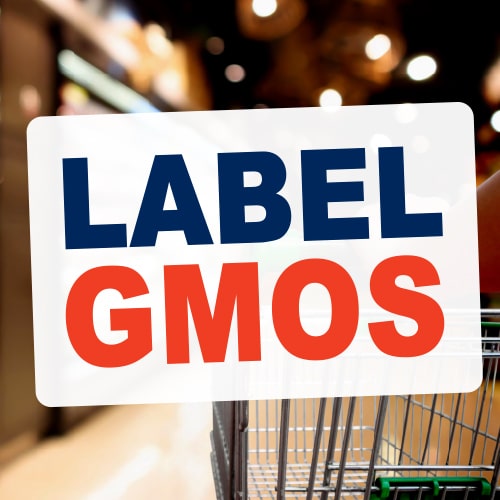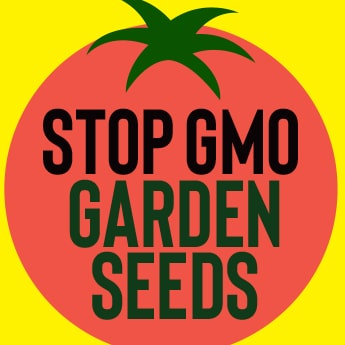Published in the Watershed Sentinel – March/April 2013
By Lucy Sharratt, Canadian Biotechnology Action Network
GM crop technologies are failing. Genetically modified (GM or genetically engineered) herbicide tolerant and insect resistant crops are failing to perform and, despite years of government and corporate research and development, there is little indication of an imminent new miracle GM crop to prop up this floundering experiment. The failure of the technology itself, however, will not necessarily mean the end of the GM experiment – unnecessary, illogical and destructive technologies are approved all the time – but increasing public opposition defies the corporate plan to engender consumer acceptance by simply offering no alternative. Despite every possible government support and protection, after 17 years, the biotech industry is struggling to maintain its big project.
Few Crops, Many Ingredients
While GM food ingredients have widely infiltrated packaged and processed foods – unlabelled – throughout North America, the reality is that there are very few GM crops and traits on the market globally. Farmers in Canada grow GM corn, canola, soy and white sugar beet. Farmers in the U.S. grow these four crops as well as GM cotton, GM papaya (in Hawaii), some GM squash varieties, and GM alfalfa. There are no other GM crops planted around the world, its’ just these eight. For example, there is no GM rice, no GM wheat and no GM potatoes or tomatoes – anywhere.
Seed market concentration is one reason why most of the GM soy, corn and cotton in the U.S. is GM – 93% of soy, 88% of corn and 94% of cotton. While the Canadian government does not keep such statistics, GM accounts for well over half of our soy and corn crop. The canola crop in Canada was forced to surrender to widespread GM contamination and almost all of the canola grown in Canada is now GM.
However widely grown, the suite of technologies from the biotech industry is small and stunted. With the exception of virus resistant papaya and squashes, the only GM traits on the market are herbicide tolerance and insect resistance. Last year we witnessed the beginning of the end for these two traits and the stumbling attempts from Monsanto and others to patch up their chemical-GM farming systems.
Superweeds, Not So Super
Monsanto faces major defeat in the form of a weed of its own creation. With the emergence of glyphosate resistant weeds, Monsanto’s herbicide Roundup, the largest selling herbicide in the world, is reaching the end of its market dominance. Many farmers in the U.S., and some in Ontario and Alberta, are now unable to kill weeds with glyphosate (the active ingredient in Roundup) and are having to turn to older herbicides such as dicamba and 2,4-D. To handle the new “superweeds”, Monsanto and Dow have created GM crops that are tolerant to dicamba and 2,4-D, so farmers can use pesticides and still buy GM seeds.
The development of dicamba and 2,4-D tolerant crops exposes that despite contradicting the warnings of environmentalists, corporations were actively preparing for the emergence of superweeds. The introduction of these new herbicide tolerant crops – approved in Canada late last year – is an admission of failure. It also represents a colossal failure of imagination in dealing with the cycle of problems in chemical-GM farming. The biotech industry is committed to addressing the problems that GM creates with new GM products rather than with actual solutions. The immediate result for Canadians will be more chemicals in our food system. It also means a reduction of tools available to farmers as the chemical and input treadmill is still going, but the wheel is getting smaller and staying on it is getting more expensive.
GM Salmon and Apple to the Rescue?
The newest GM products on the immediate horizon come from small companies and make a mockery of the grandiose industry promises to feed the world. The GM fast-growing Atlantic salmon and the “non-browning” apple could both be approved this year in the U.S. and Canada, despite wide industry opposition and public protest.
The GM apple stands as a glorious example of the misdirection of science to problems that already have solutions. The GM apple – designed to not go brown after being cut – is a product looking for a market, and has failed to find one. The BC Fruit Growers Association and the US Apple Association oppose the introduction of the GM apple, the companies that sell sliced apples don’t want to use it, and 69% of Canadians don’t want to eat it.
The fact that the industry is rejecting this proposed apple does not, however, mean that it won’t be approved. Our regulatory agencies do not consider potential market harm or the opinions of farmers and consumers before they approve a new GM product. It’s effective public protest that stands between the GM apple and approval and this is why action in BC is particularly important.
Provincial Governments Forced to Act
Faced with near unanimous opposition to the GM apple from BC industry stakeholders and consumers, the BC government needs to step up. The future of the province’s orchardists and fruit processors and distributors needs to be protected from the GM apple. While all governments are beginning to understand that not every GM product is welcomed by farmers and agribusiness and some pose serious economic threats, there are no official mechanisms to deny approval based on economic and social concerns. This has to change, and in the meantime provinces have to find a way to stand up for their industries.
The BC and other provincial governments will also have to step up to protect their industries and ecosystems from the proposed GM salmon. The Atlantic salmon are engineered with genetic material from Chinook salmon and ocean pout to grow twice as fast and, if approved, it would be the first GM food animal in the world. It is close to approval in the U.S. and Environment Canada could make a decision any day. The GM salmon would eventually make its way to BC fish farms but the company’s proposed first step is to produce the fish eggs in Prince Edward Island, ship them to Panama to grow out and then ship the processed fish to the US consumer market. This plan neatly avoids a full environmental assessment and while the federal government has jurisdiction over safety assessment and approval, the economic burden rests with provincial governments: Will PEI risk its tourism industry to become the global supplier of GM fish eggs? Will BC protect its wild salmon and fishing industries by taking a stand to stop the introduction of the GM salmon?
Promises, Promises
Its easy to make big promises for the future of this technology but at what point do we conclude that the GM experiment has failed and that the promised miracle crops are not going to materialize? The reality is that GM failed before it was even commercialized. Without farmer and public consultation, the technology was doomed to be misapplied by corporations to suit their needs rather than the needs of farmers and consumers. There is no democracy to prevent the misuse of this technology and only inadequate regulations to assess its safety. The launch and continuation of the GM project is a mark of the failure of our democracy. It will therefore be public mobilization that will force an end to this experiment and thereby revitalize our democracy.





